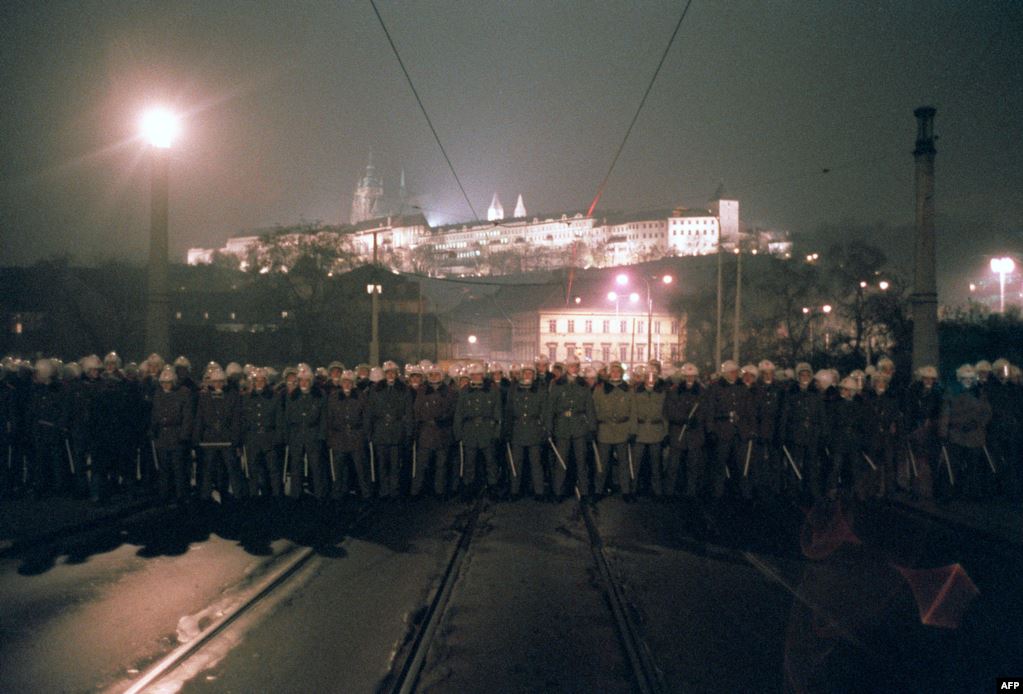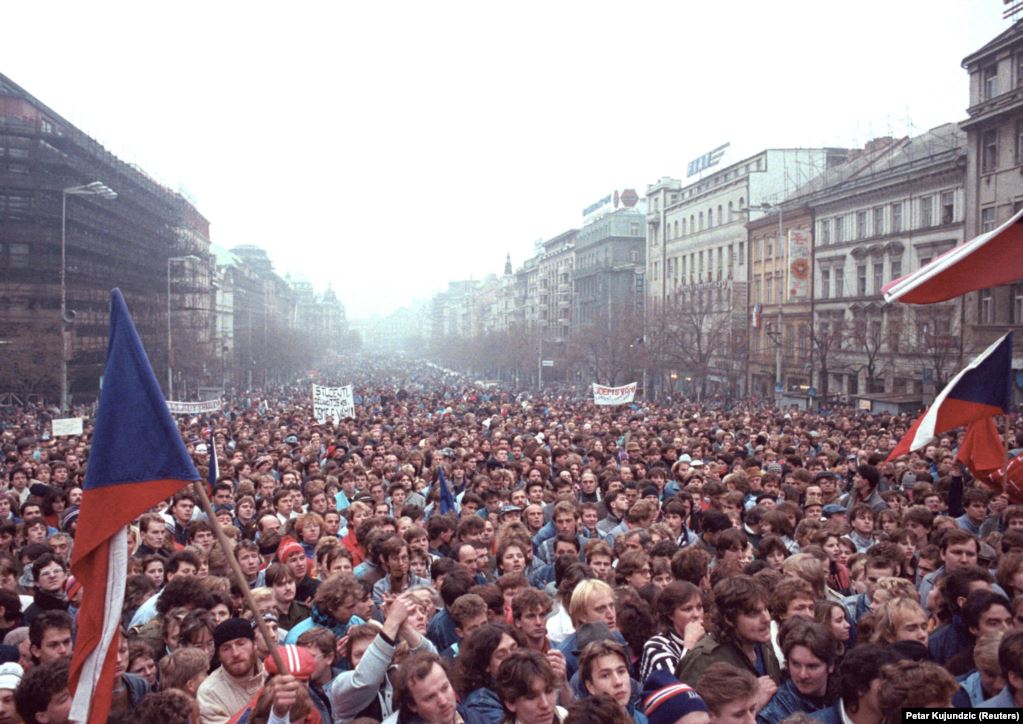The first demonstrations took place in January 1989. Protesters marking 20 years since Jan Palach self-immolated in protest against the Soviet-led invasion of 1968 were brutally dispersed by police.

The next protest was held on October 28, 1989, the anniversary of the founding of Czechoslovakia in 1918.

November 17, 1989: the biggest protest for 20 years.

On November 19, riot police blocked a bridge to prevent protesters marching to Prague Castle.

On November 21, more than 200,000 demonstrators took to the streets of Prague for a fifth consecutive day of protests.

Vaclav Havel addressed the massive crowd from a balcony overlooking Wenceslas Square.

Half a million people came to listen to speeches from Havel and other opposition leaders.

Wenceslas Square, December 19, 1989.

On December 29, 1989, Vaclav Havel and his wife, Olga, greeted citizens at Prague Castle after being appointed by the Federal Assembly as the new president of Czechoslovakia

December 31, 1989.

In order to commemorate the 30th anniversary of the Velvet Revolution, the Office of the Government of the Czech Republic is going to open for the public Liechtenstein Palace at the Kampa, a historic palace built in the late 17th century, renovated in 1864.
Liechtenstein Palace is one of the most beautiful and largest palaces in Prague. It´s used for representative purposes by The Office of the Government of the Czech Republic.
On the second floor, there are apartments, in which stayed, for example, Spanish King Juan Carlos with his wife Sofie, British Queen Elisabeth II, Japanese Emperor Akihito with Empress Michiko. The halls and salons in the basement are used for working meetings and friendly gatherings.
Between 1979 and 1991 the palace was renovated according to the project of architect B. Fuchse jr. and adapted to serve the purposes of the Government Presidium. Its premises were enlarged by one basement level and the peripheral walls were secured against the threat of slipping down into the Vltava river
From 1895 the palace belonged to the Prague Municipality, which used it for a variety of official purposes, and made several adaptations. The enclosing wall was pulled down in 1941 – 1942, and after World War II the garden became a public park.
The disastrous floods in 2002 devastated the ground floor premises, and the palace had to undergo another, costly renovation.
More info here

